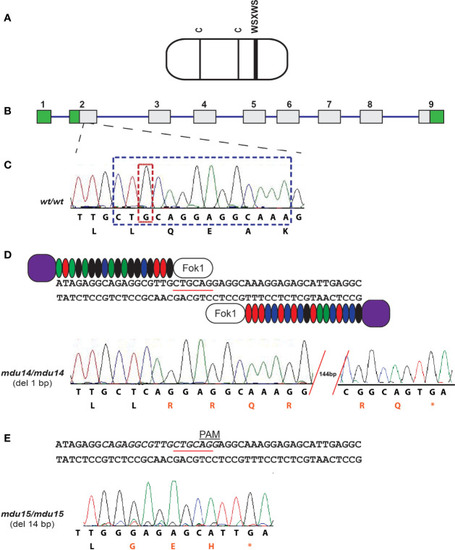- Title
-
Cytokine Receptor-Like Factor 3 (CRLF3) Contributes to Early Zebrafish Hematopoiesis
- Authors
- Taznin, T., Perera, K., Gibert, Y., Ward, A.C., Liongue, C.
- Source
- Full text @ Front Immunol
|
The |
|
Generation of zebrafish |
|
Mutation of |
|
Mutation of |
|
Mutation of |





